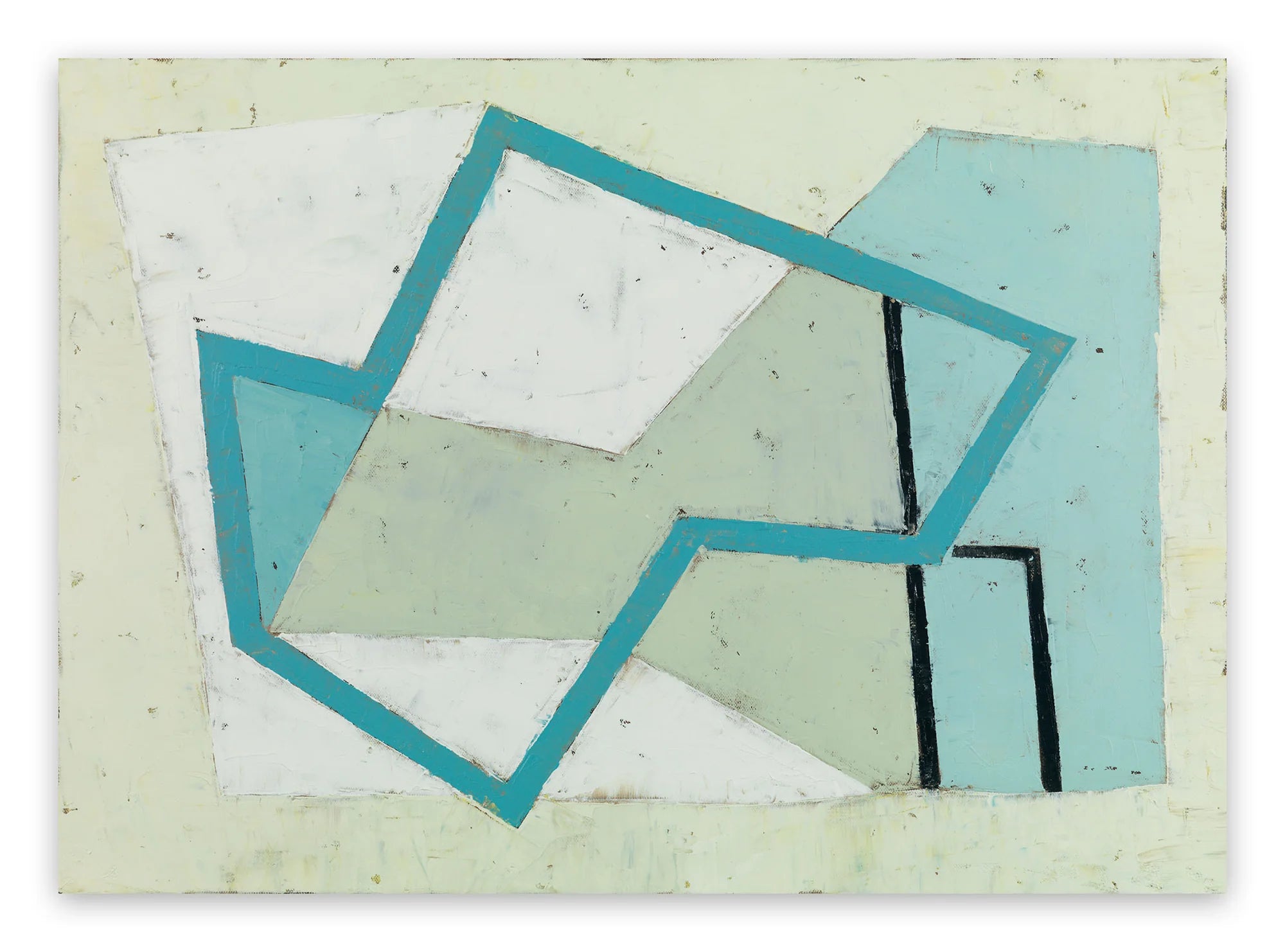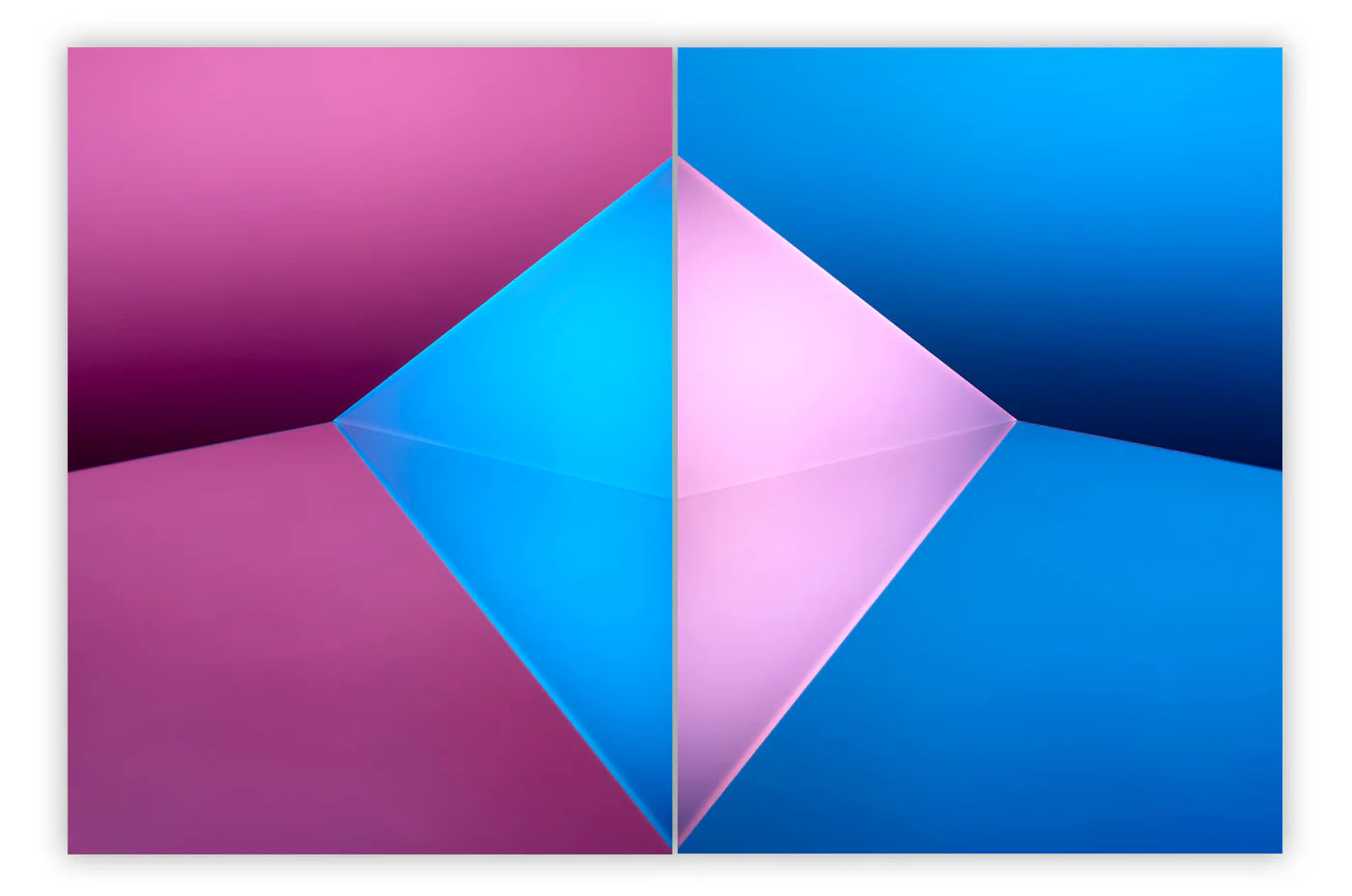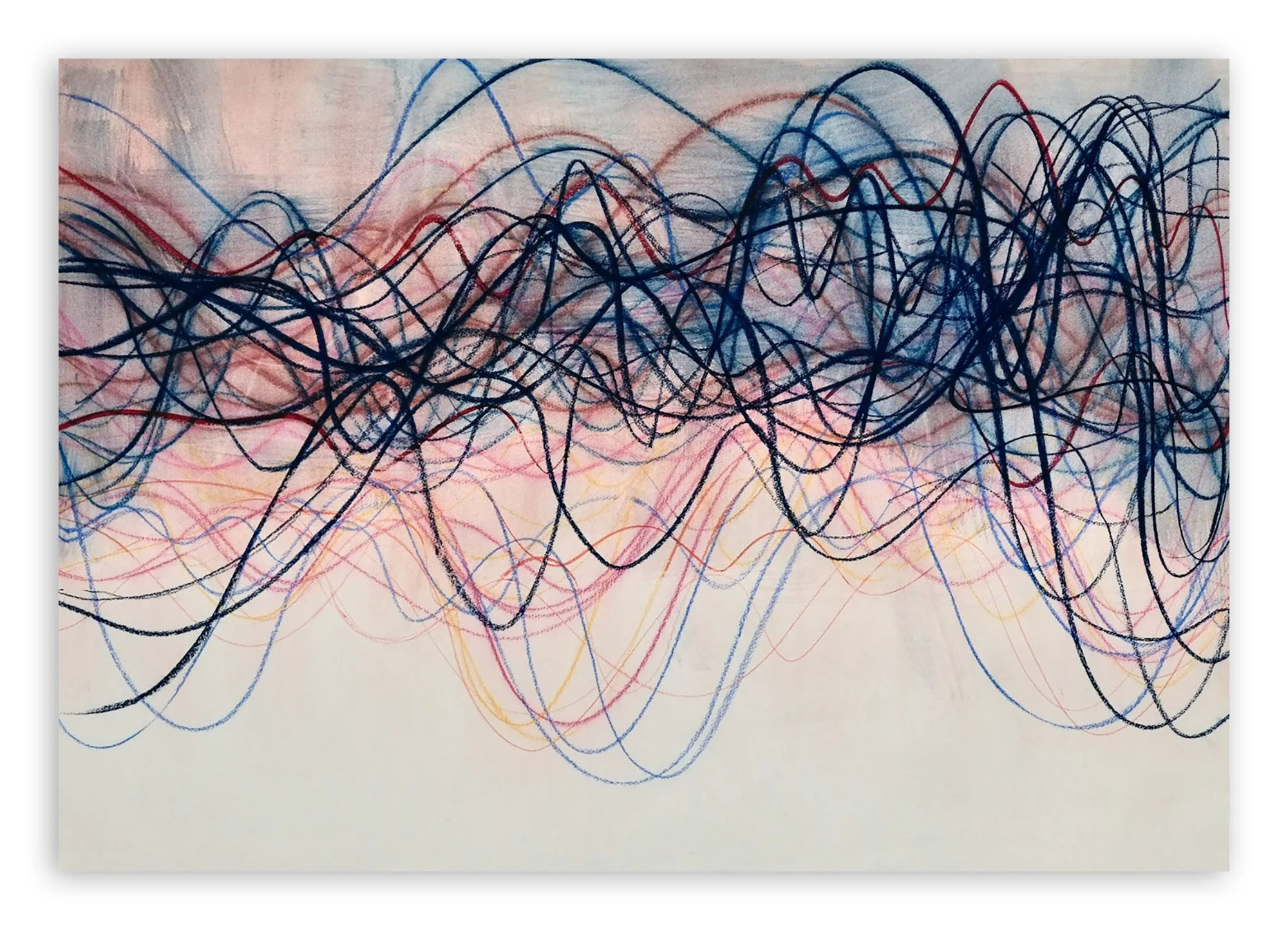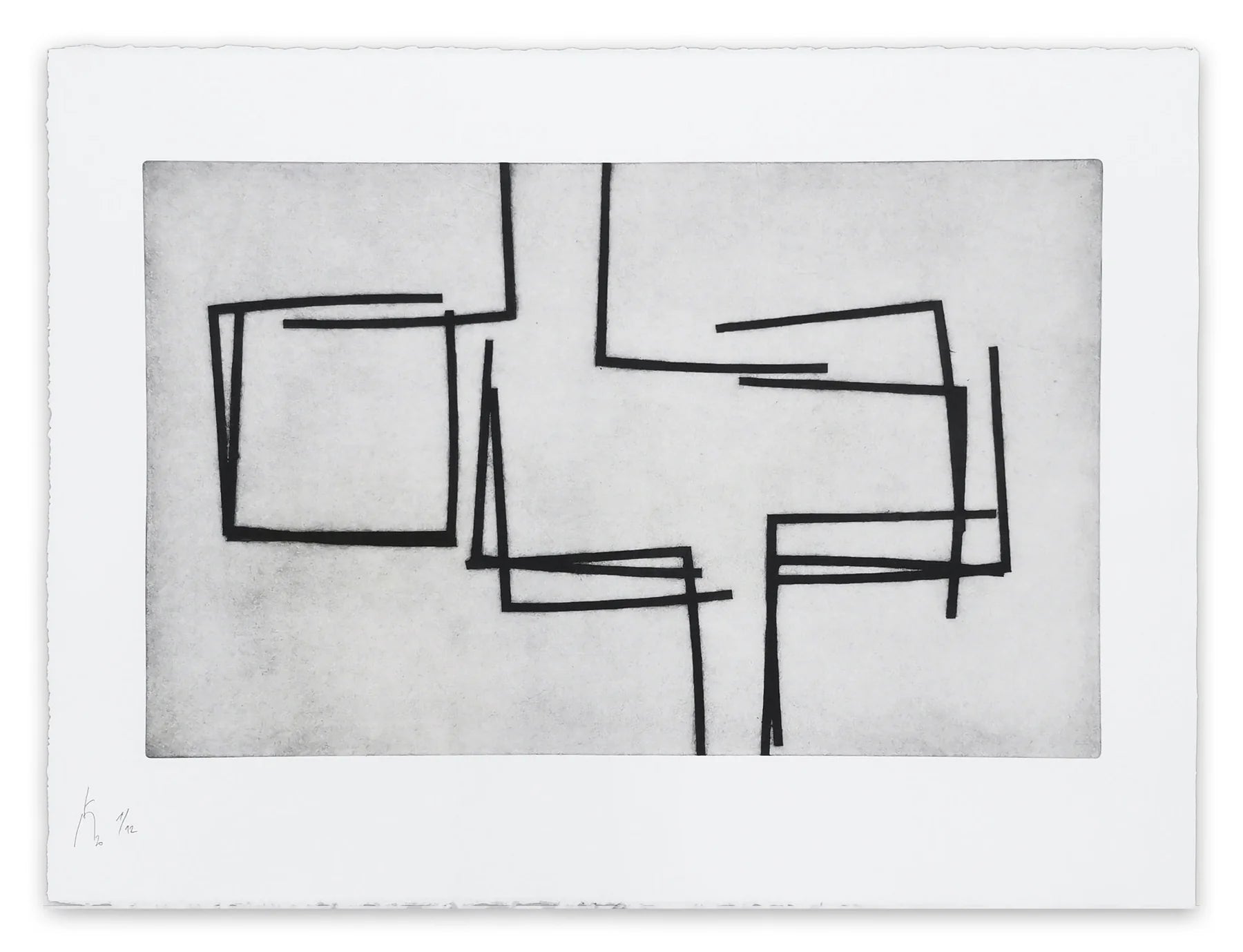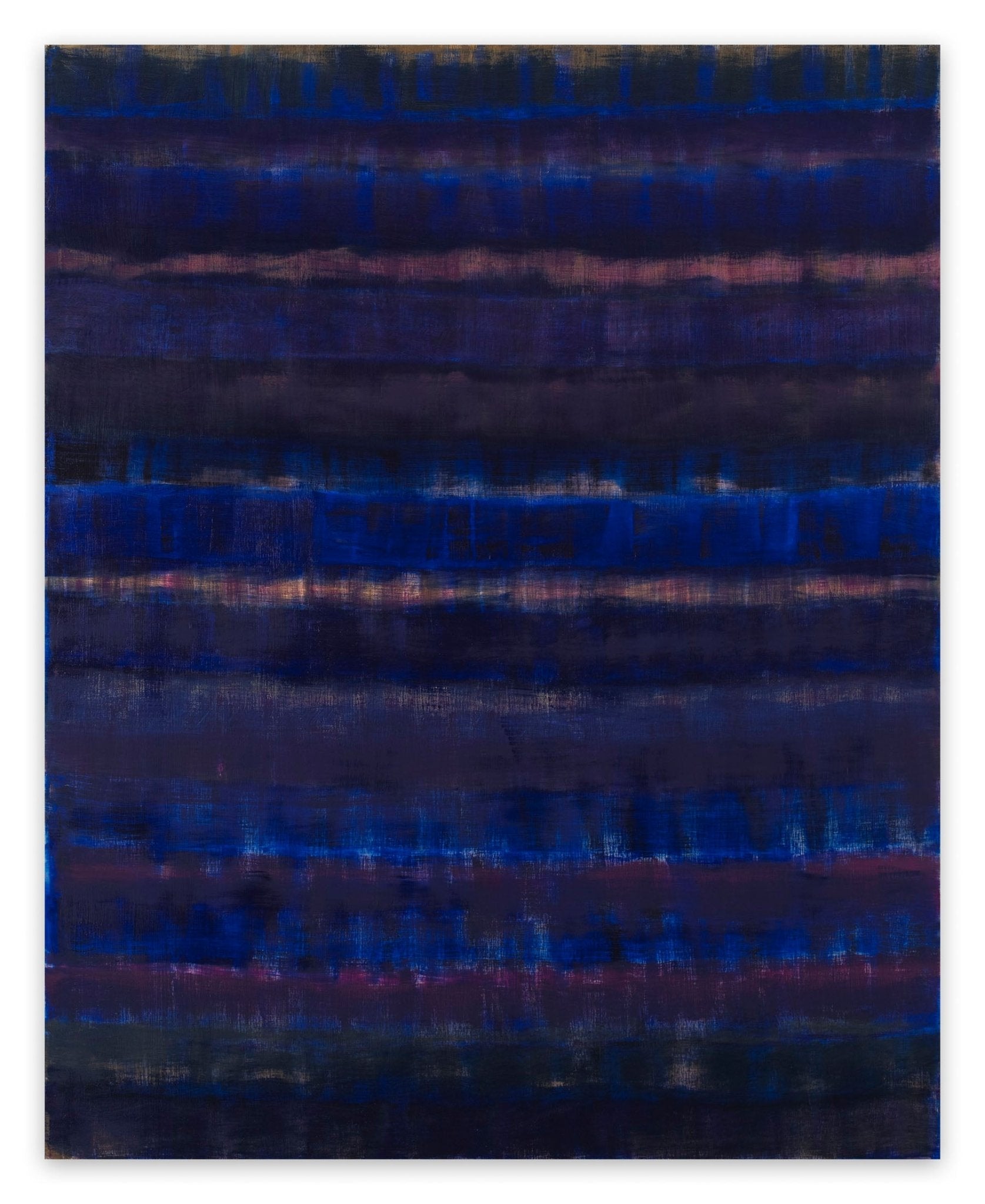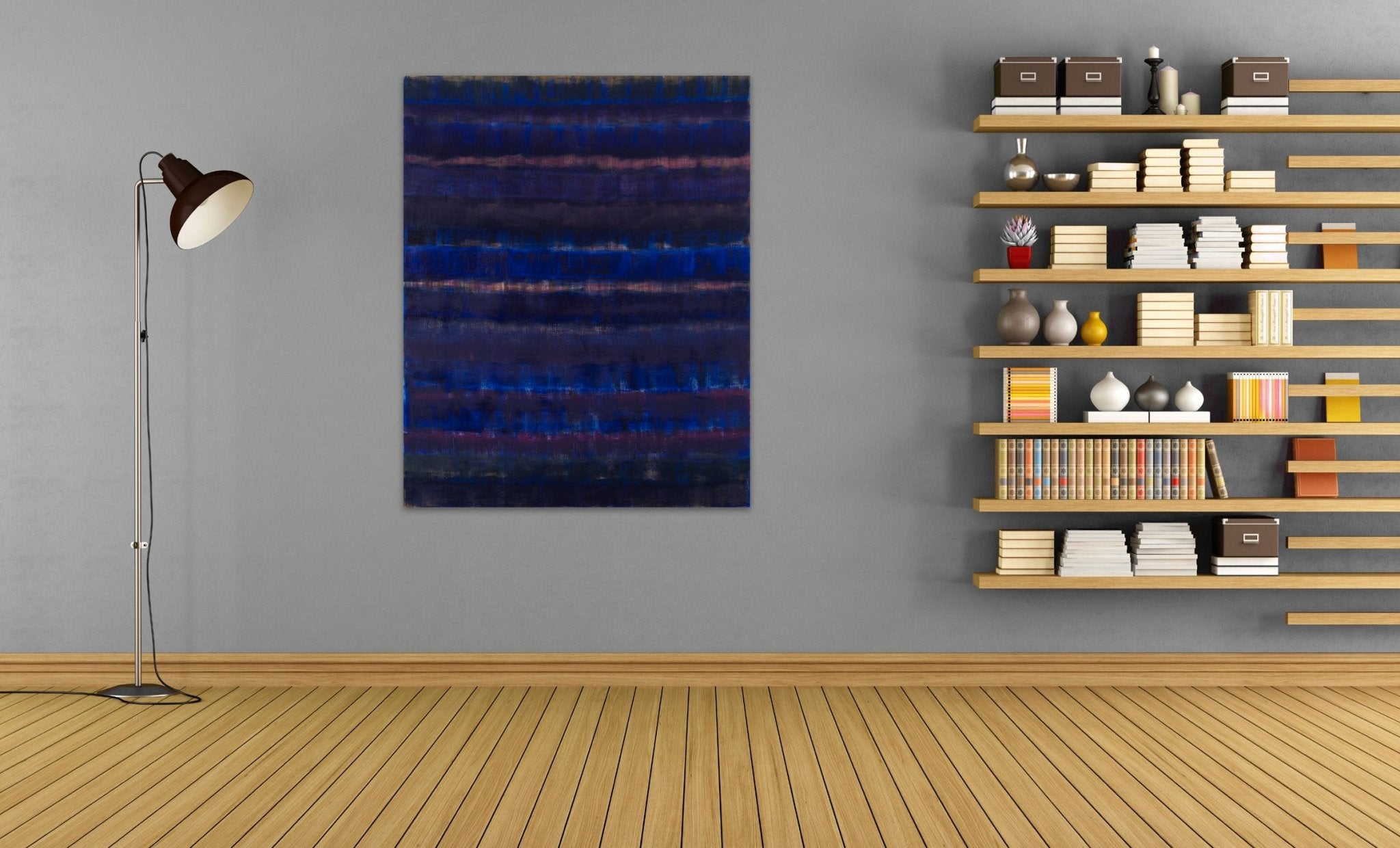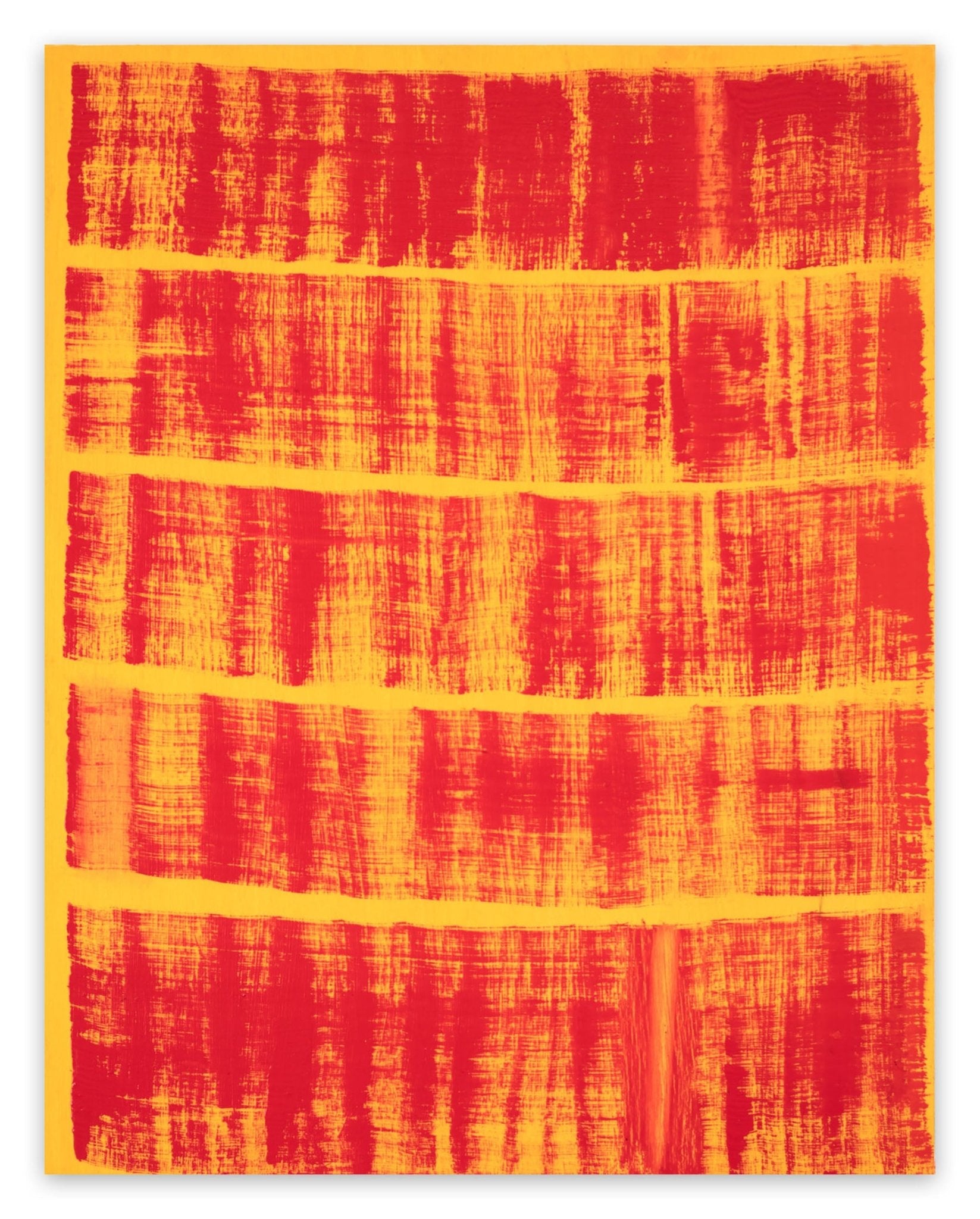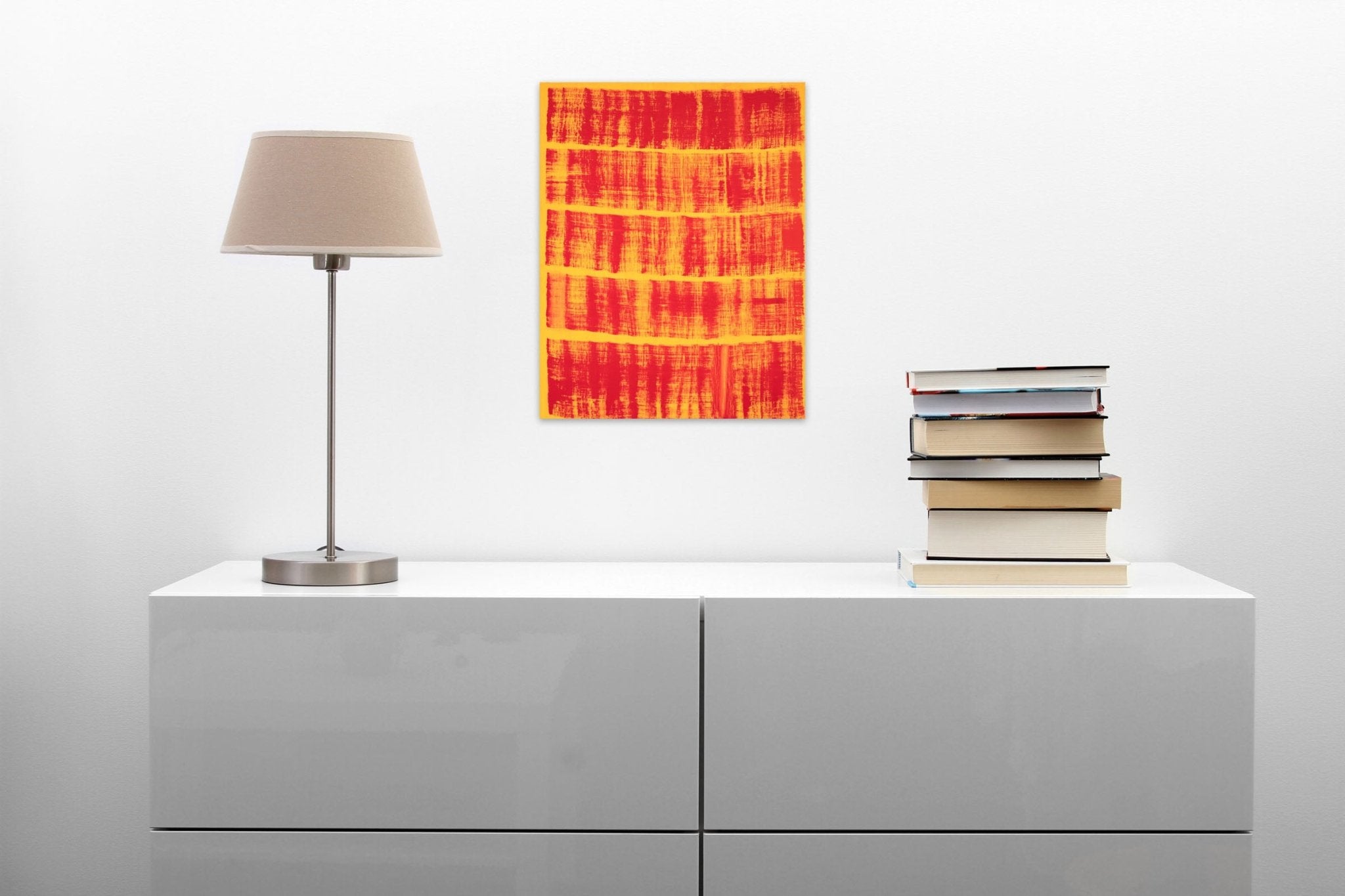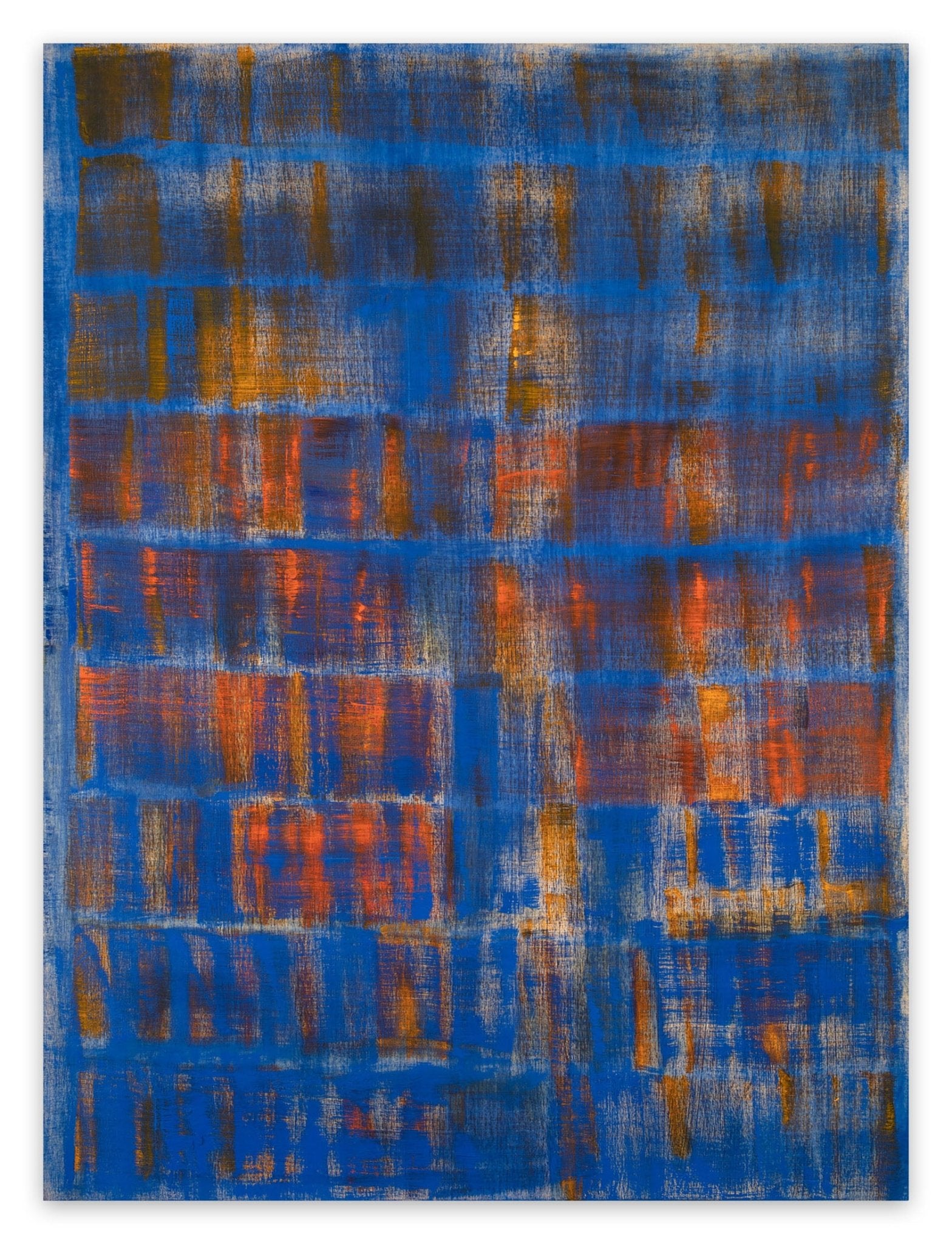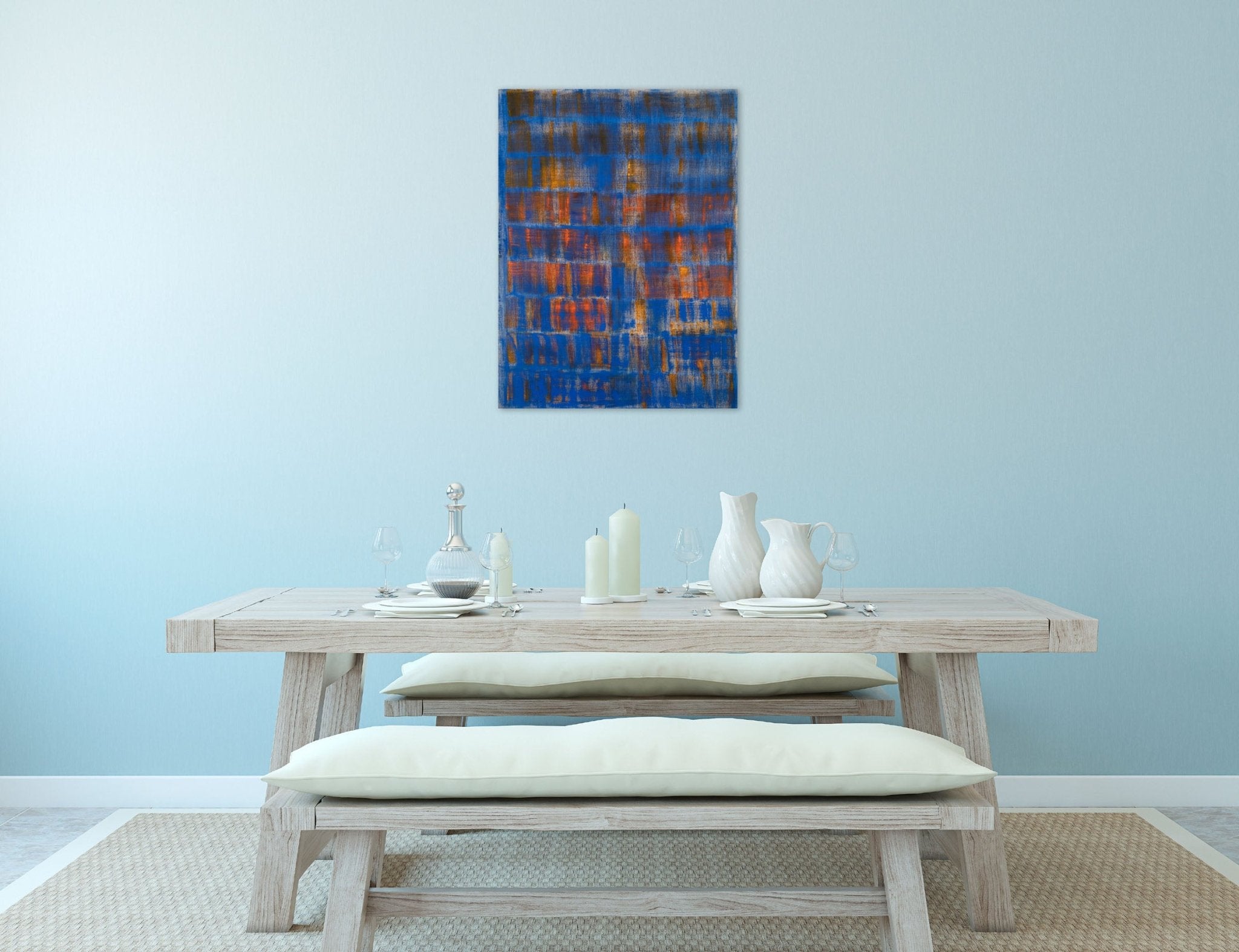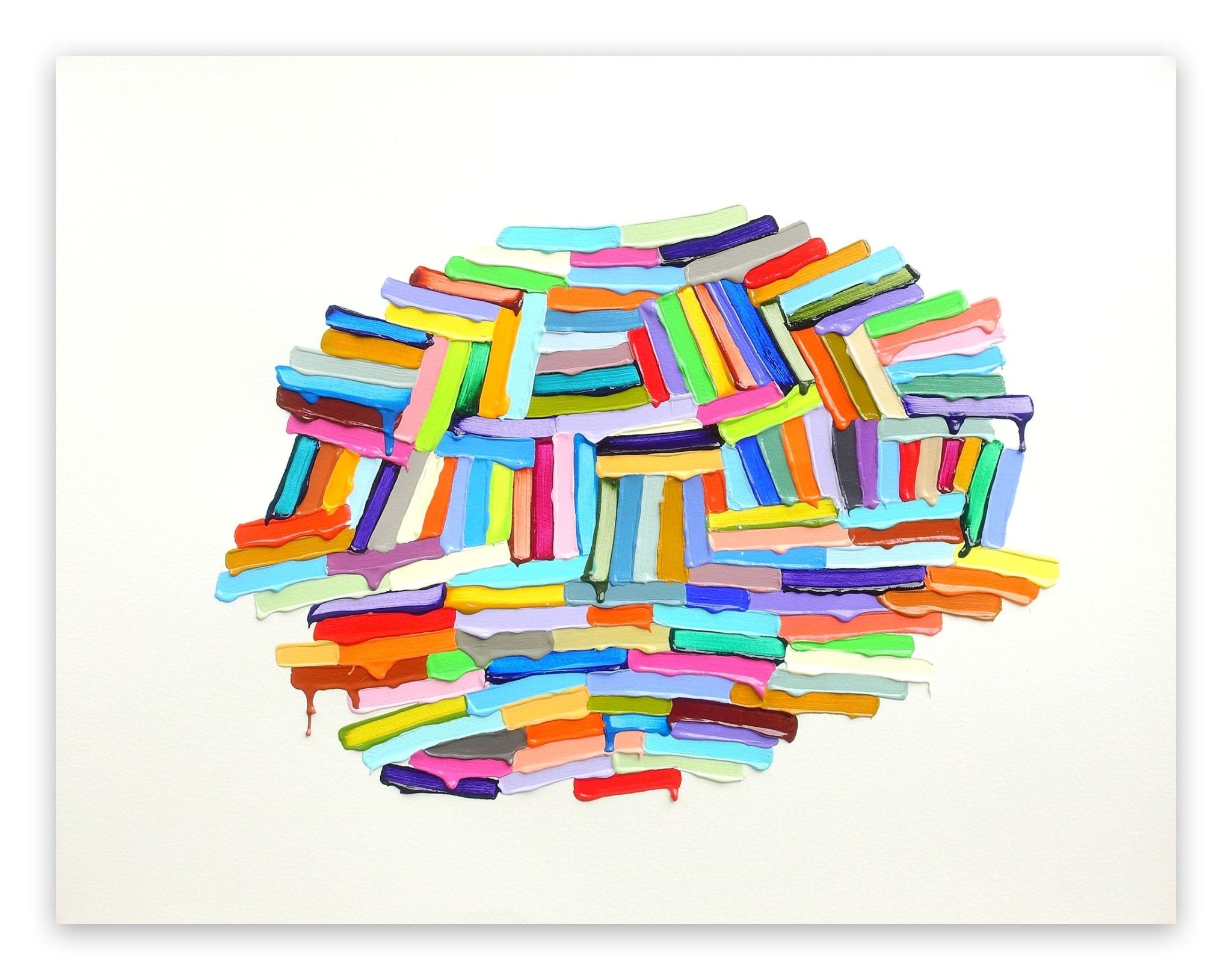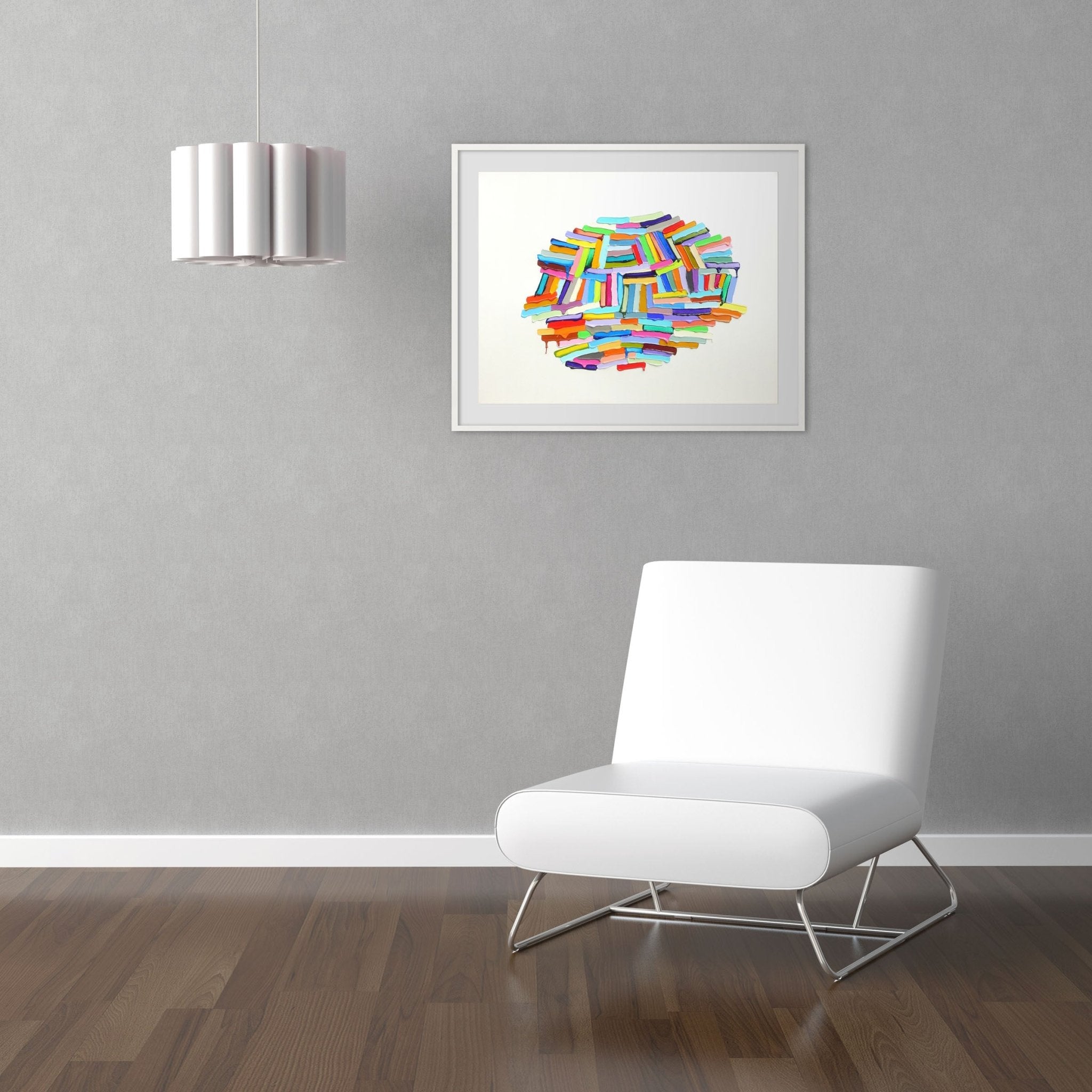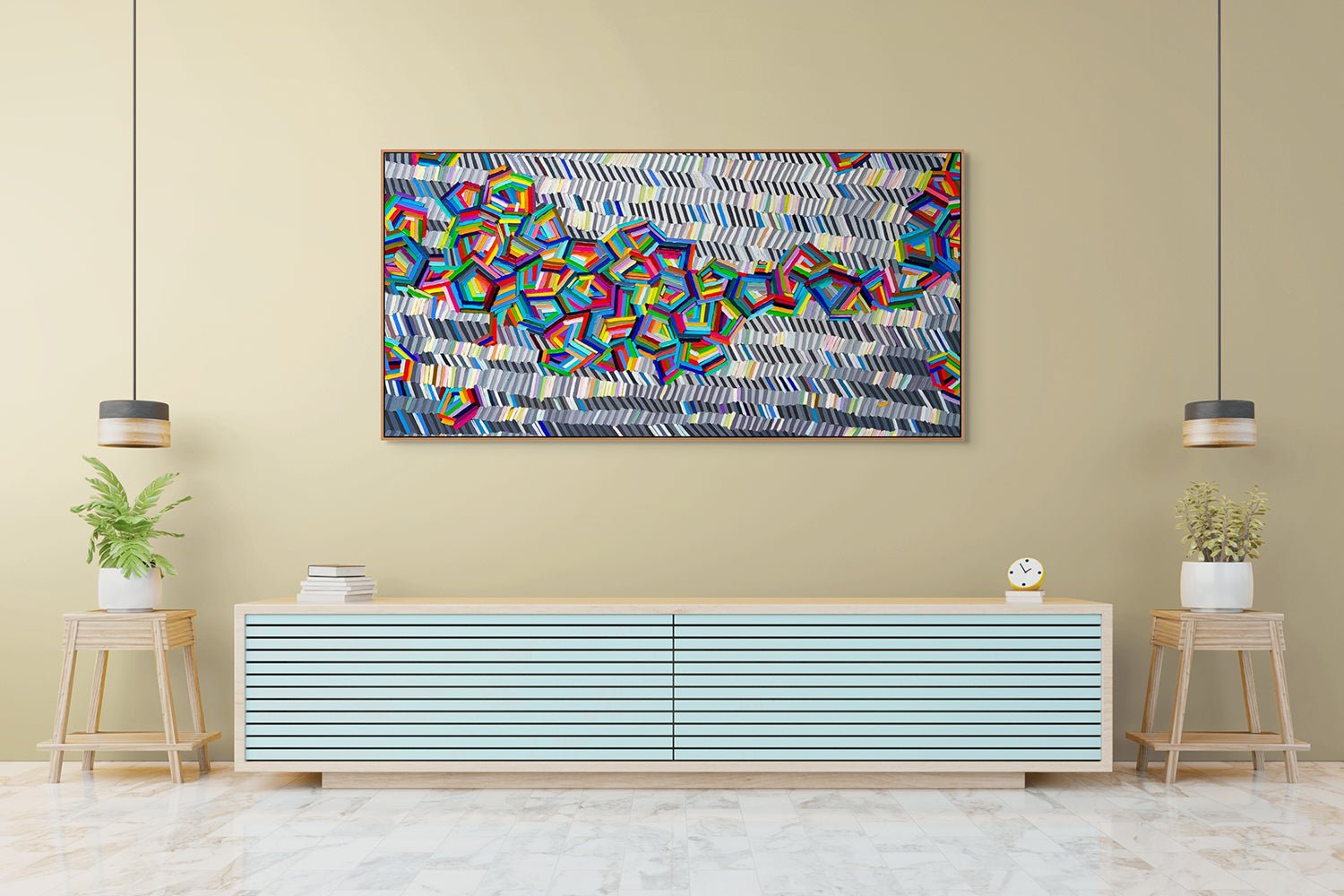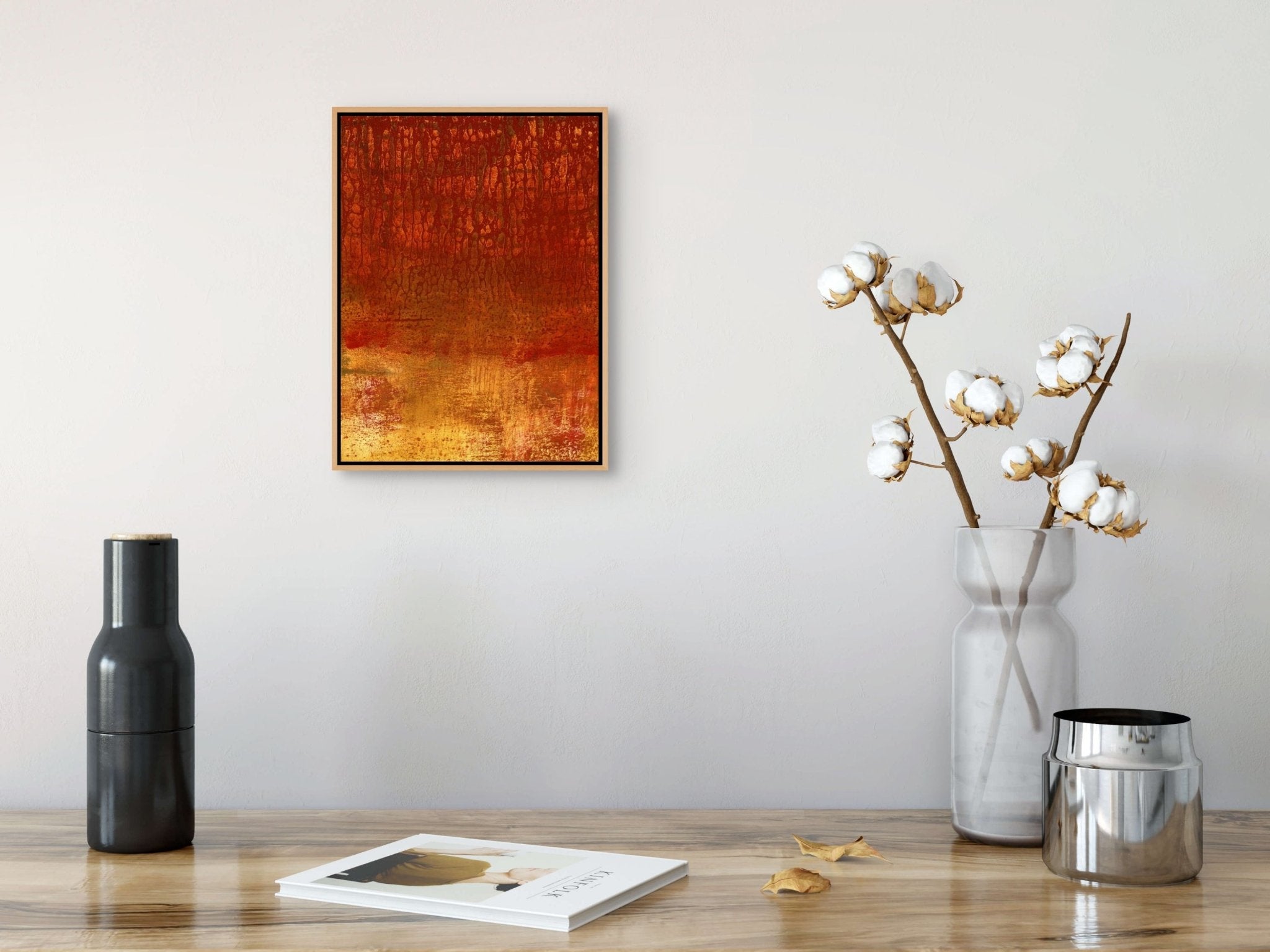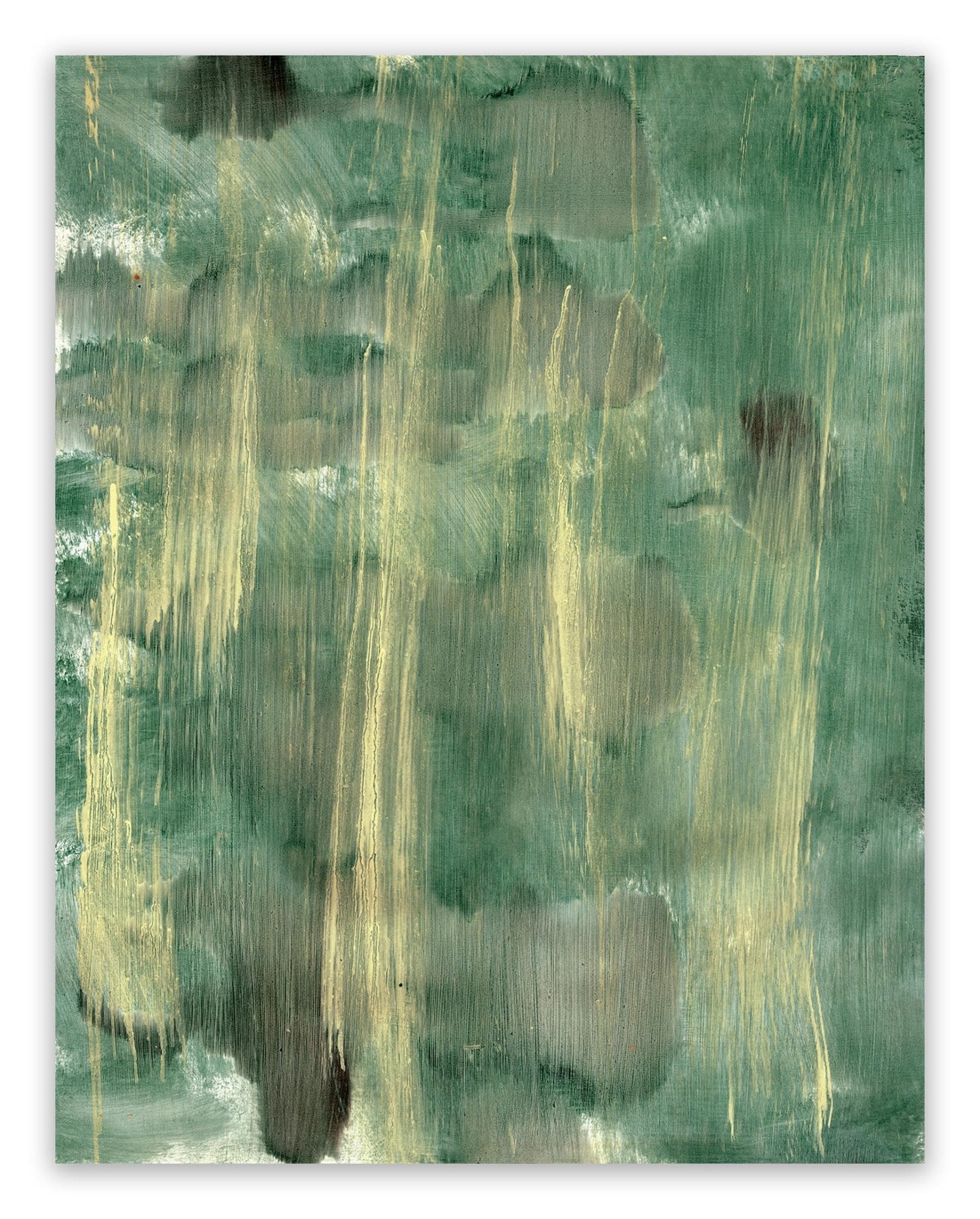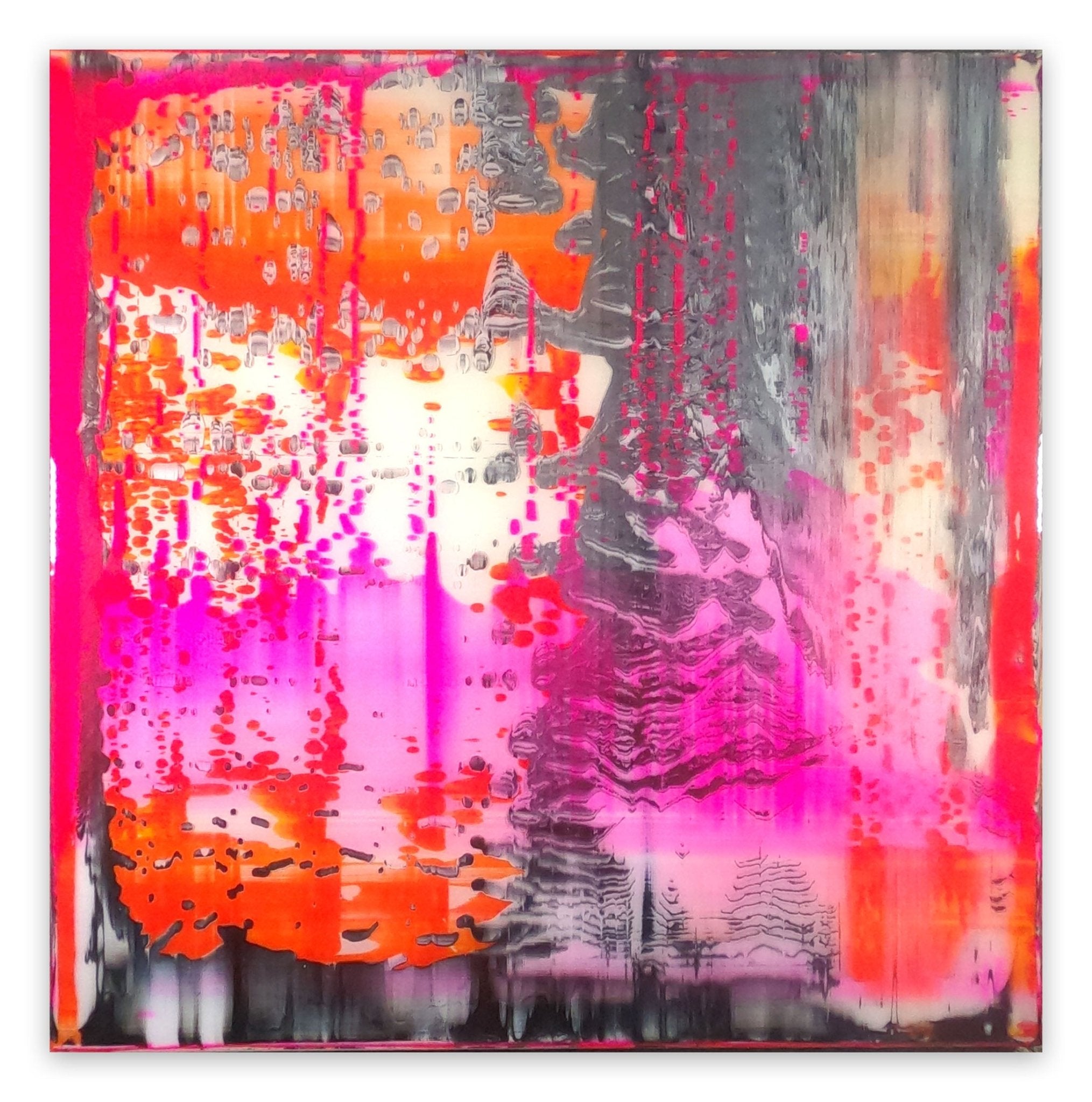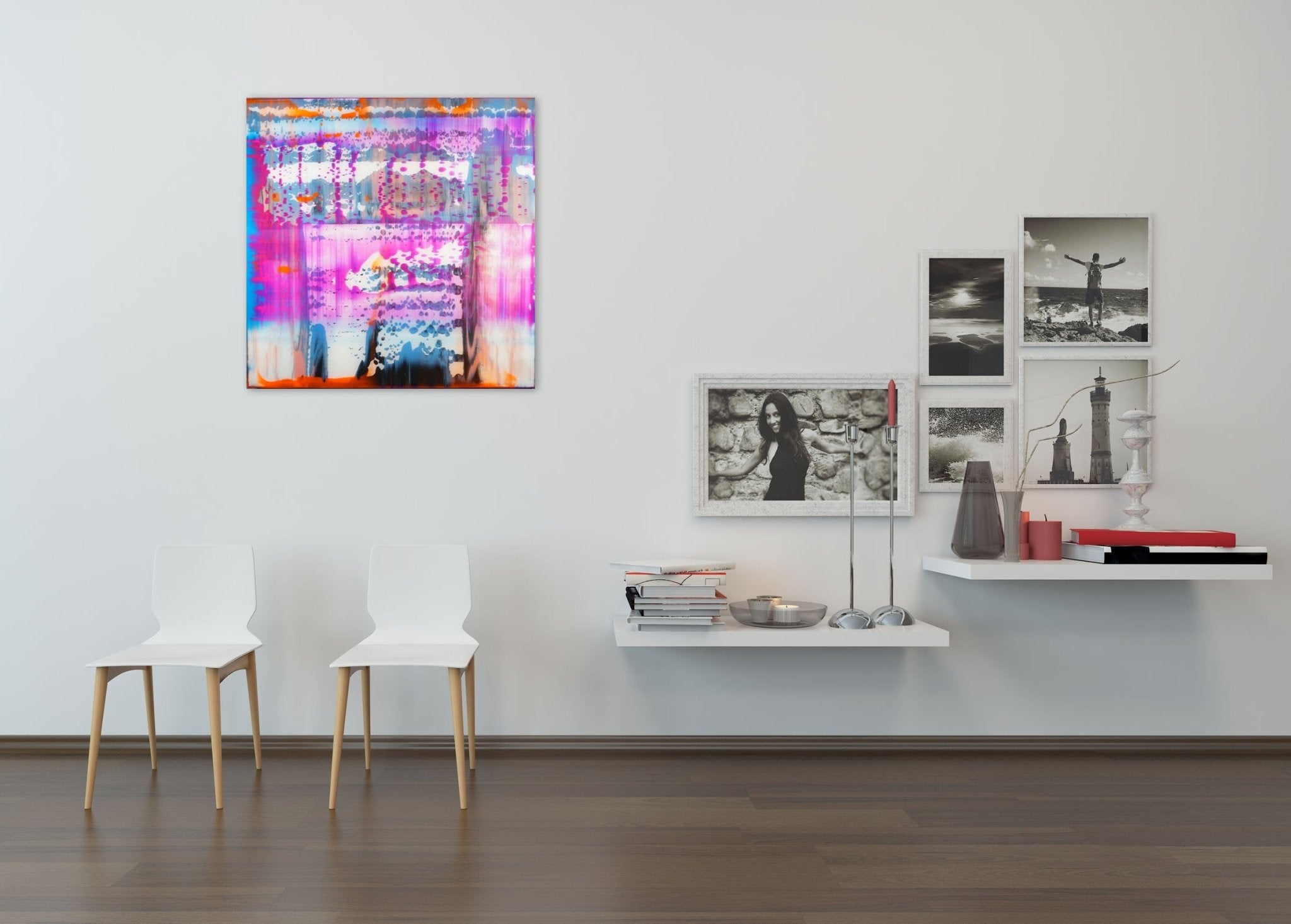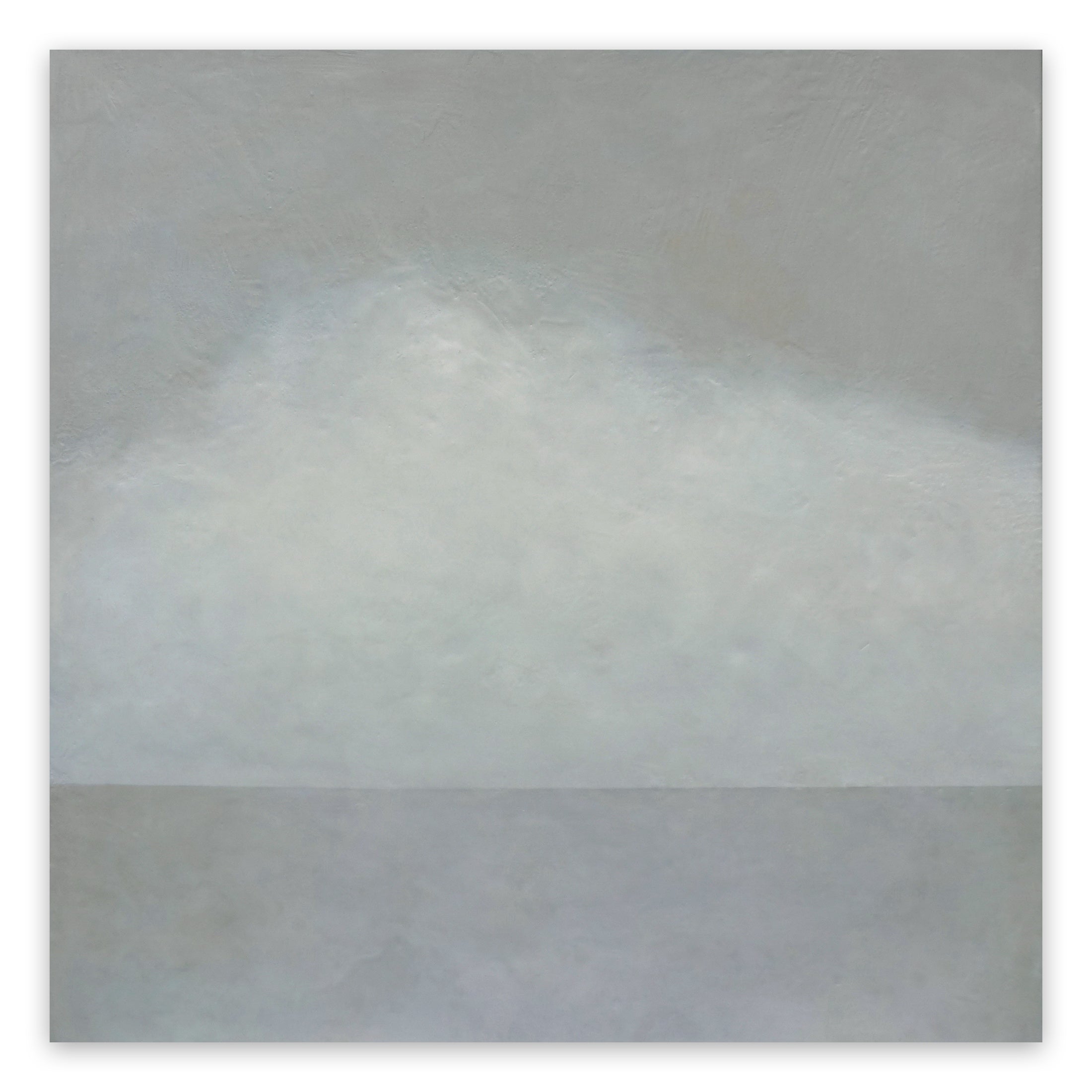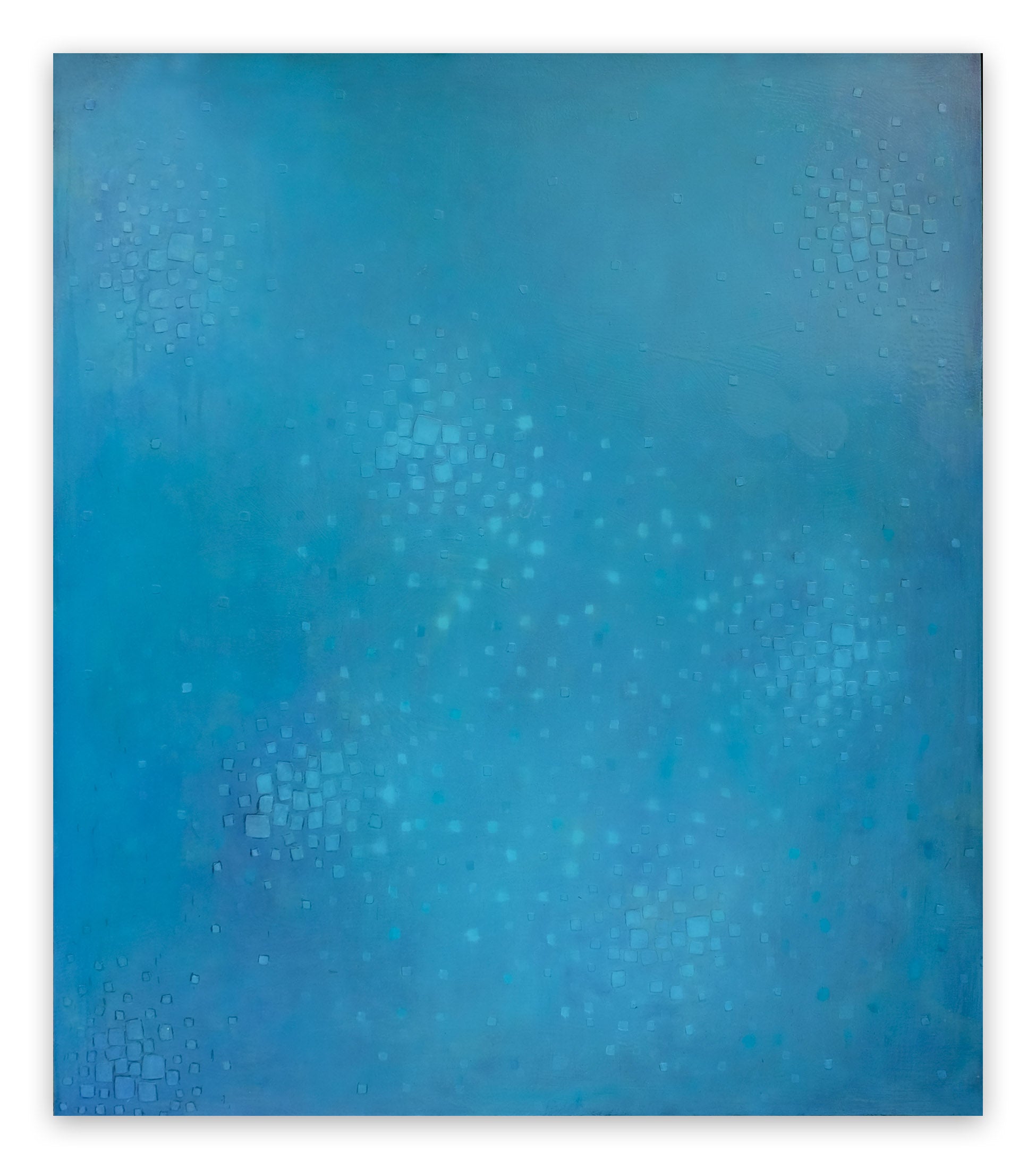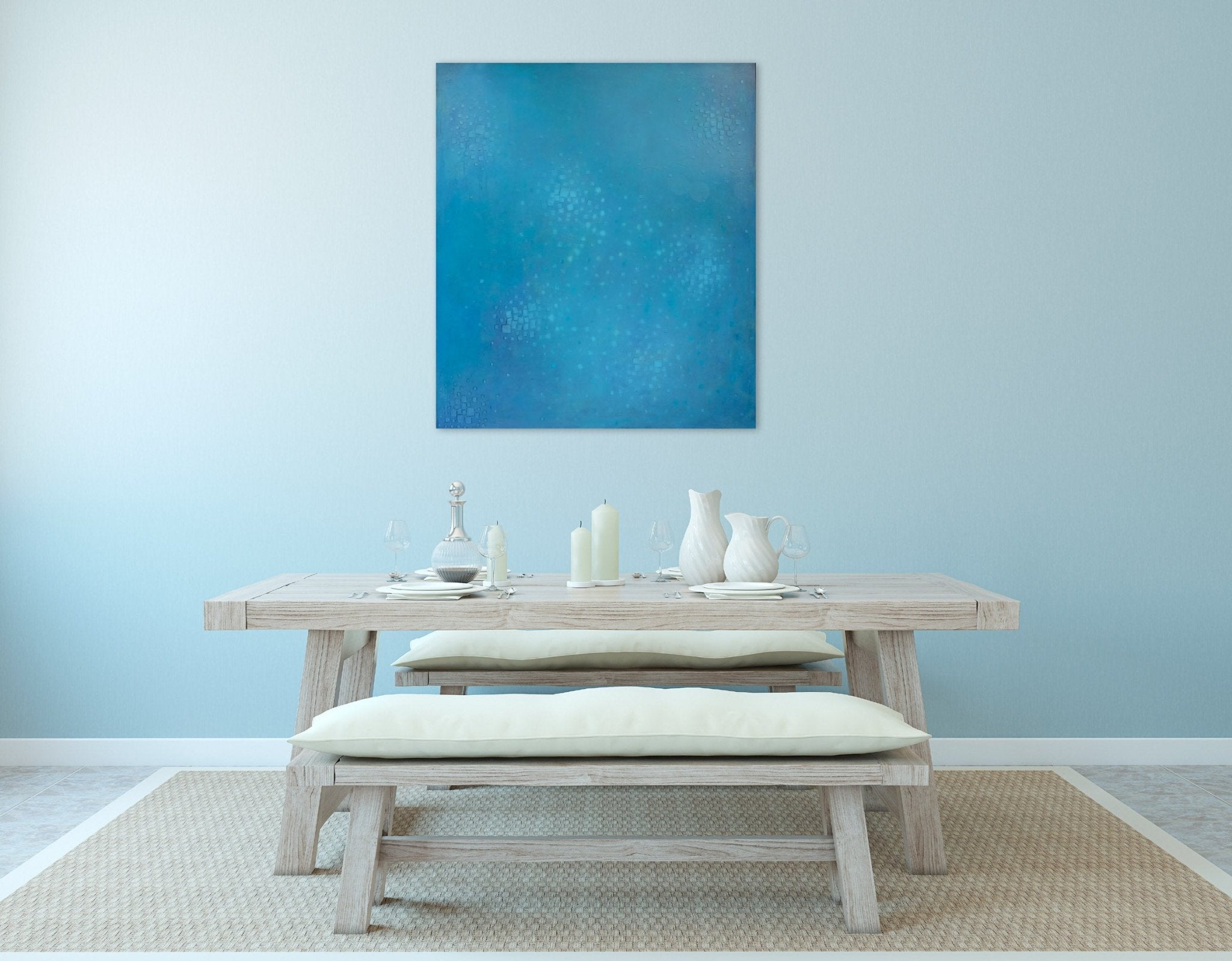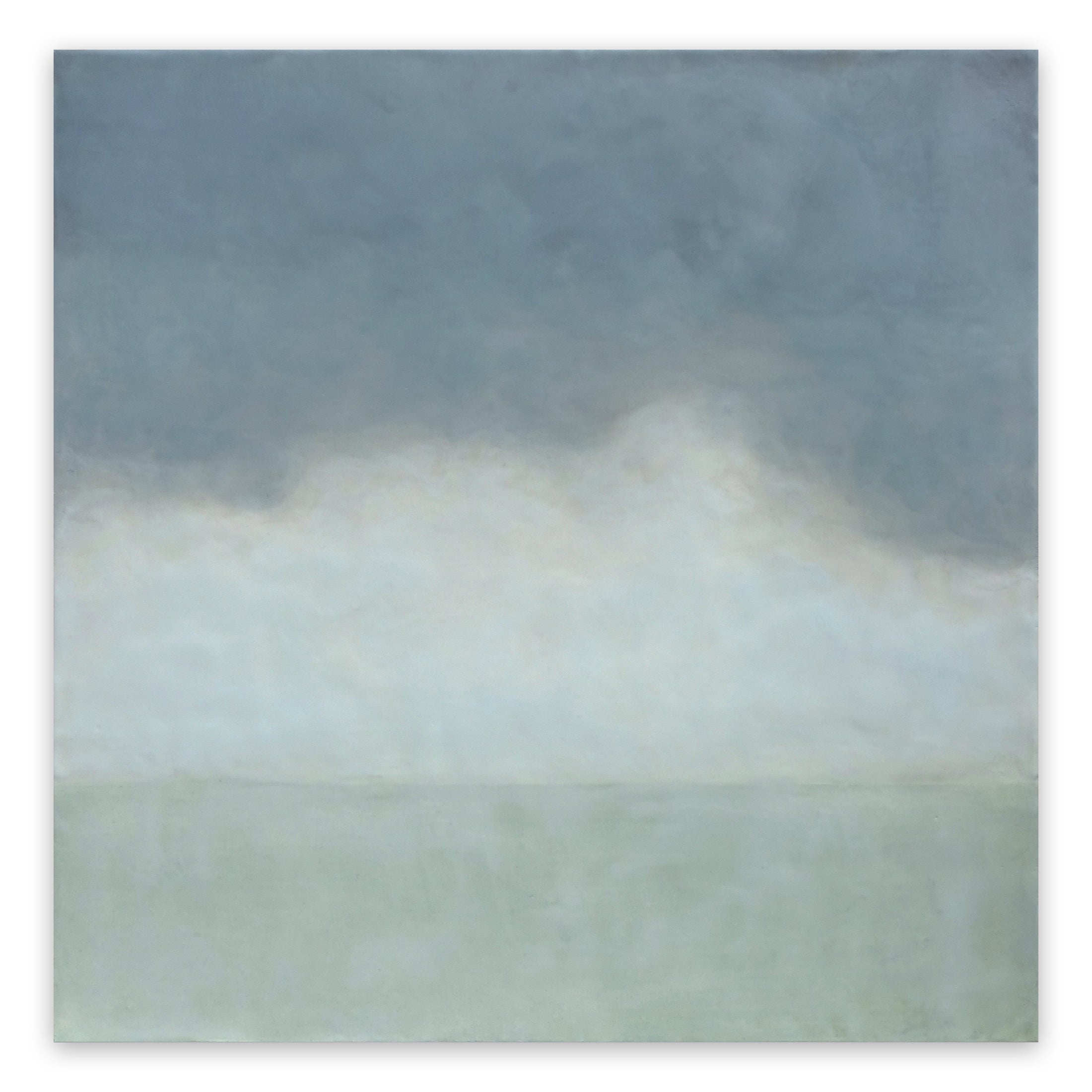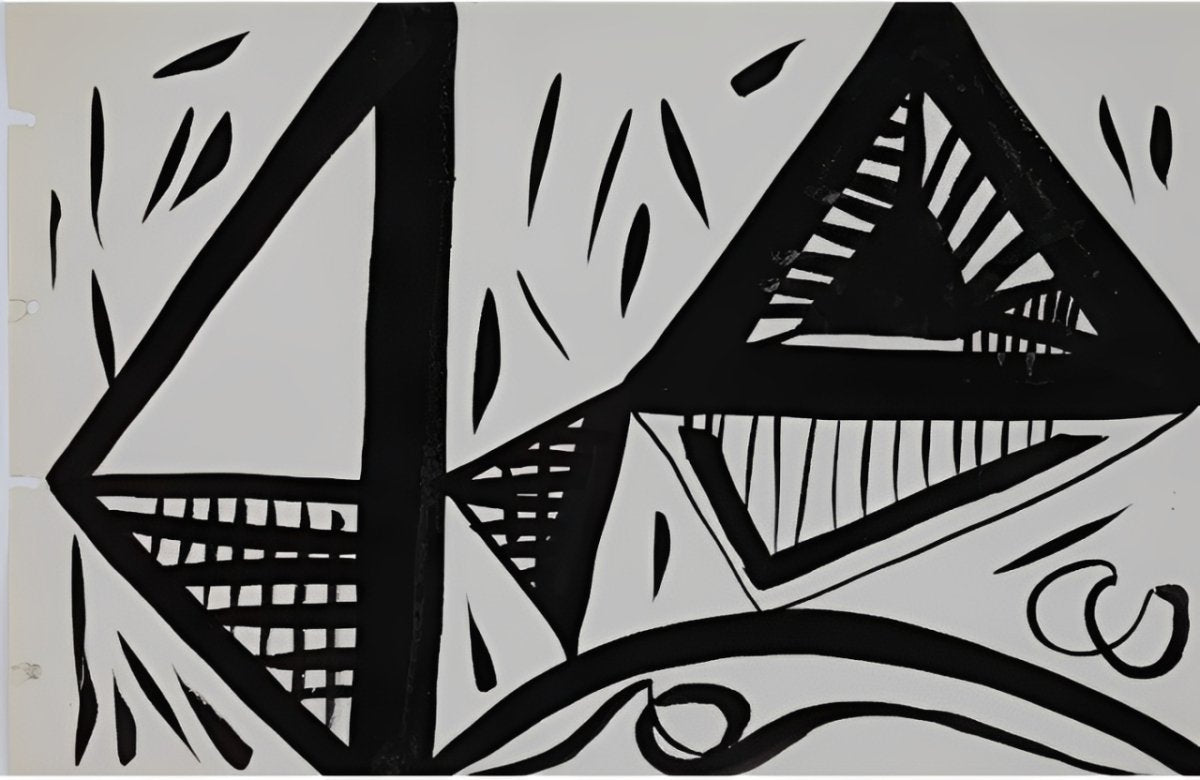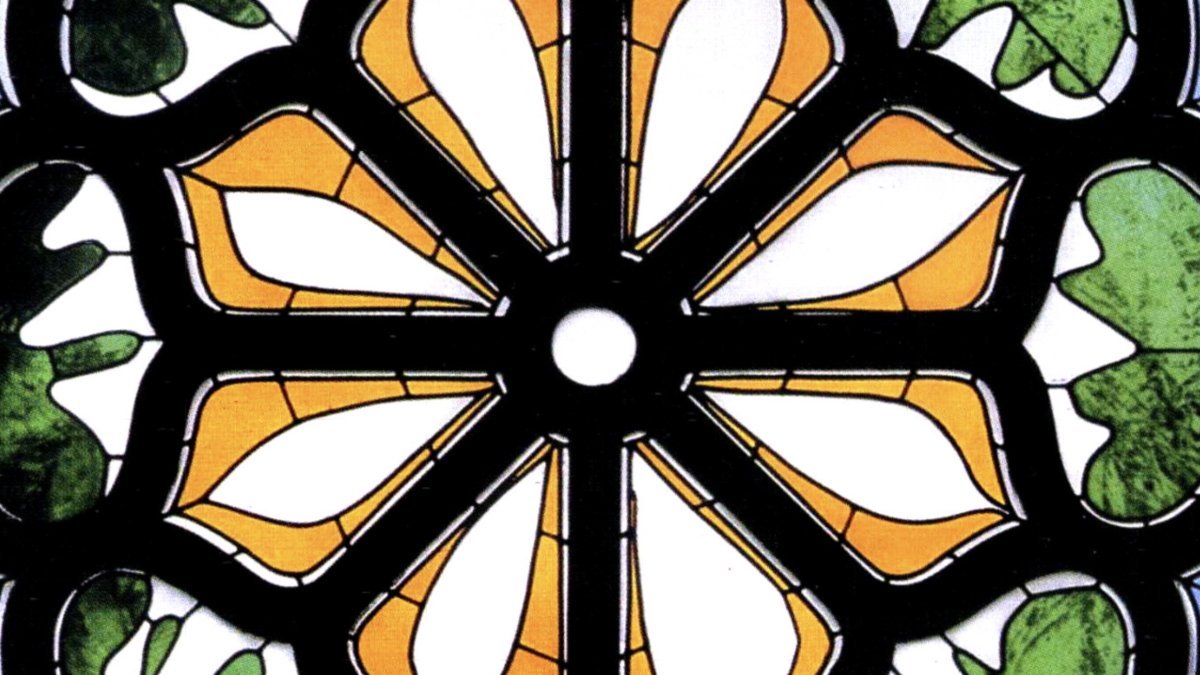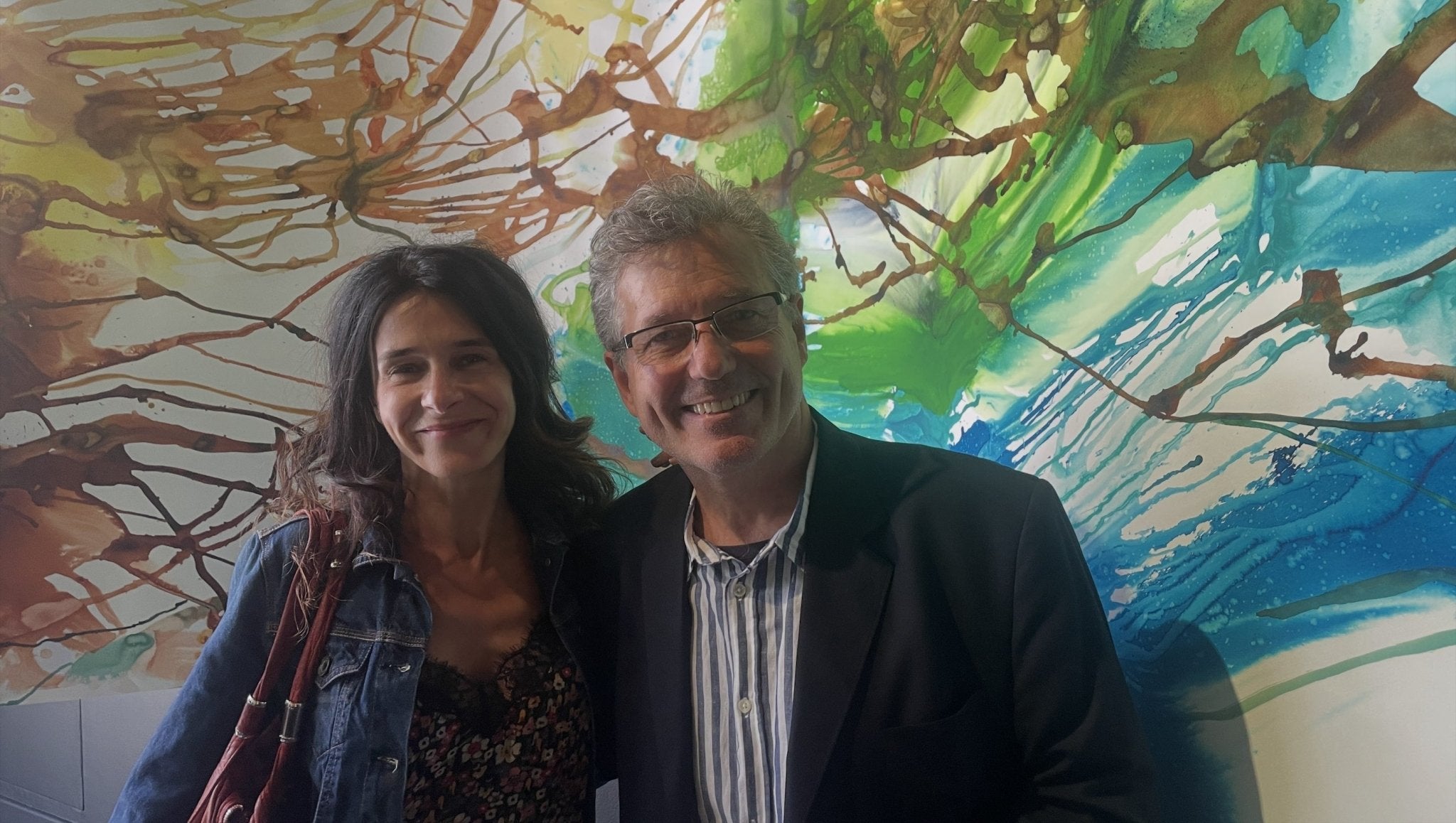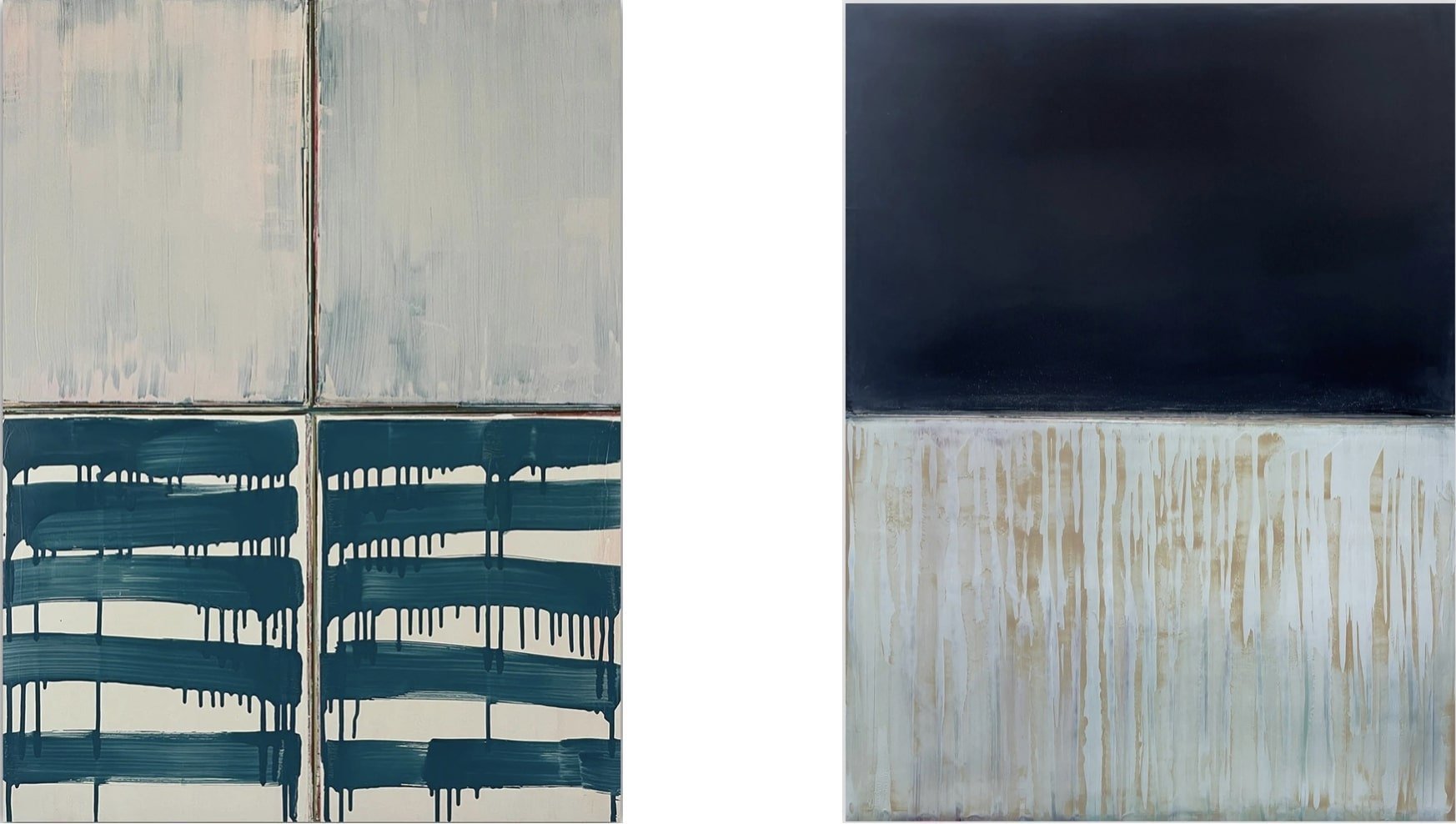
매우 화가다운 추상 예술가들: 새로운 연금술사들
하이델베르크 스튜디오에서 Arvid Boecker (대표 이미지)는 스크린 인쇄 스퀴지를 사용해 체계적으로 캔버스를 긁습니다. 층층이 쌓아 "색의 고고학"이라 부르는 것을 만듭니다. 8,000킬로미터 떨어진 미국 스튜디오에서는 Clay Johnson가 석고보드 도구로 같은 작업을 하며 때로는 같은 부분을 30번이나 파괴하고 재건합니다. 한편 브뤼셀에서는 Janise Yntema가 블로우토치로 밀랍을 정확한 온도로 가열하여 수개월간 쌓인 작업에 또 다른 반투명 층을 더합니다.
이 예술가들은 한 번도 만난 적 없지만, 현대 미술에서 점점 드물어지는 집착을 공유합니다: 페인트 자체—그 무게, 질감, 물리적 존재—가 대체 불가능한 힘을 지닌다는 믿음입니다.

Clay Johnson, After Midnight, 2020
사라져가는 인내의 예술
우리는 예술적 지름길의 시대에 살고 있습니다. 디지털 도구는 즉각적인 결과를 약속합니다. 새로운 기법이 매주 등장하며 단지 새로움 때문에 찬사를 받습니다. 예술계는 다른 모든 것처럼 속도와 편리함에 매혹되었습니다. 전통적인 화가 기법—느리고, 노동 집약적이며, 용서하지 않는—은 거의 시대착오적으로 보입니다.
하지만 독일에서 캘리포니아, 벨기에에서 네덜란드까지 스튜디오 곳곳에, 일부 예술가들은 중세 장인들의 헌신처럼 캔버스 위에 페인트를 계속 밀어붙입니다. 그들은 우리가 Very Painterly Abstract Art라고 부를 수 있는 것을 대표합니다. 이는 공유된 미학이 아니라 공유된 신념에 의해 정의되는 실천입니다: 페인트의 물리적 조작이 어떤 디지털 과정도 복제할 수 없는 무언가를 창조한다는 믿음입니다.
이것은 향수가 아닙니다. 저항입니다.
"매우 화가다운" 예술이란 무엇일까요?
Clay Johnson 의 작업을 보면 즉시 이해할 수 있습니다. 그는 붓을 사용하지 않습니다 - 너무 부드럽고 예측 가능하기 때문입니다. 대신 팔레트 나이프와 건설 도구로 캔버스를 공격하며 긁고, 쌓고, 파괴하고, 다시 만듭니다. 그의 아크릴 페인트는 각 층이 나타날 때마다 반응할 수 있을 만큼 빨리 마르며, 조각에 가까운 표면을 만듭니다.
또는 Martina Nehrling의 체계적인 임파스토 흔적 축적을 관찰해 보세요. 각 붓질은 건축 요소처럼 이웃한 부분을 단단히 붙잡고 있습니다. 그녀의 순수하고 불투명한 색상은 물리적 에너지로 진동하는 듯한 최면적인 패턴을 만듭니다.
이 예술가들이 공유하는 것은 스타일이 아닙니다—완성된 작품들은 현저히 다르게 보입니다. 그들이 공유하는 것은 과정입니다: 재료로서의 페인트에 대한 집착적 헌신, 주제로서의 표면, 누적된 층을 통해 가시화된 시간.

Martina Nehrling, Apophis, 2024
Very Painterly Art의 네 기둥
그들의 작업 방식을 면밀히 관찰하면, Very Painterly Abstract Art를 정의하는 네 가지 근본 원칙이 나타납니다. 이것들은 규칙이 아니라 집착이며, 스튜디오에서 모든 결정을 형성하는 원동력입니다.
재료의 정직성
이 예술가들은 페인트가 다른 무언가처럼 보이게 하려 하지 않습니다. Yari Ostovany는 안료가 녹고, 덮이고, 긁히고, 다시 녹는 방식을 찬양합니다. Danny Giesbers는 투명한 층을 쌓아 빛나는 장을 만들며, 각 획은 몇 달에 걸쳐 완성된 전체 구성에서 중요한 역할을 합니다. 페인트는 페인트로 남아 있습니다—점성이 있고, 불투명하며, 고집스럽고, 그 자체로 아름답습니다.
시간적 깊이
각 레이어는 결정, 시간의 한 순간, 이전에 있었던 것에 대한 반응을 나타냅니다. Jeremy Annear의 부조 같은 표면은 창의적 결정의 고고학적 현장이 됩니다. 예술가가 쌓고, 긁어내고, 방향을 바꾸고, 해결책을 찾은 지형에서 각 그림의 역사를 읽을 수 있습니다.
신체적 참여
이 작품들은 단지 마음뿐 아니라 몸을 필요로 합니다. Robert Niesse는 복잡한 물리적 과정을 통해 여러 색상 구역을 쌓고 손상시킵니다. Emily Berger는 몸 전체를 사용해 제스처적인 수평 획을 작업합니다. 이 그림들은 어떤 조수도 복제할 수 없고, 어떤 디지털 과정도 시뮬레이션할 수 없는 인간의 노력이 담겨 있습니다.
복제에 대한 저항
아마도 가장 중요한 것은, 이 작품들은 화면을 통해 완전히 감상할 수 없다는 점입니다. 완전한 이해를 위해서는 물리적 존재가 필요합니다. 인스타그램 시대에 이것은 대담한 예술적 선언을 의미합니다: 어떤 경험은 디지털화될 수 없고, 어떤 즐거움은 가상으로 공유될 수 없습니다.

Jeremy Annear, Cascading Lines, 2013
시대착오의 용기
2025년에 이런 방식으로 작업하려면 용기가 필요합니다. 다른 예술가들이 AI 협업, NFT 가능성, 설치 스펙터클을 탐구하는 동안, 이 화가들은 몇 달간 고독한 노동을 위해 작업실로 물러납니다. 그들은 지름길도, 즉각적인 만족도, 바이럴 가능성도 없는 기법을 받아들입니다.
Arvid Boecker의 그림은 인내심 있는 구성 과정을 통해 탄생합니다—먼저 연필로 구성을 그리고, 그 후 오랜 기간에 걸쳐 색과 층을 발전시킵니다. 각 작품은 지속적인 집중의 지형도와 같습니다. 즉각성을 보상하는 문화 속에서 그는 결국을 고집합니다.
Janise Yntema는 고대 로마인들이 사용하고 수천 년에 걸쳐 완성된 기법인 인캉스틱 왁스를 사용합니다. 그녀의 작업실에서 자연 밀랍과 수지를 나무 판넬에 바르고 열을 활성 용매로 사용합니다. 반투명 층을 천천히 쌓아 올리며 빛 자체가 구성적으로 존재하는 이미지를 만듭니다. 그녀의 과정은 그녀가 "지시된 것과 통제되지 않은 것 사이의 연금술적 춤"이라고 부르는 것을 필요로 하며, 이는 디지털 예측 가능성과는 정반대입니다.

Danny Giesbers, Neon 1 (왼쪽)과 Dan Flavin (오른쪽), 2020
역사적 메아리, 현대적 긴급성
이 접근법은 저명한 선례들과 연결됩니다. Gerhard Richter의 스퀴지 페인팅은 치열하게 작업된 표면을 통해 통제와 우연 사이의 궁극적 대화를 보여줍니다. Frank Auerbach와 Leon Kossoff는 임파스토를 조각적 부조로 변형시켰습니다. Anselm Kiefer는 모래, 재, 기억을 역사적 무게를 지닌 표면에 통합했습니다.
하지만 오늘날의 Very Painterly Abstract 아티스트들은 다른 문화적 맥락에 직면해 있습니다. 그들의 선배들이 사진과 대중 매체의 지배에 맞서 작업했다면, 이 아티스트들은 디지털 문화 자체의 지배에 맞서고 있습니다. 그들은 단순히 그림을 만드는 것이 아니라 사고 방식, 참여 방식, 경험 유형을 보존하고 있습니다.

Emily Berger, Old Flame (왼쪽)과 Red Dream (오른쪽), 2022
국제적 지속성
놀라운 점은 이러한 헌신이 문화와 대륙을 넘어 나타난다는 것입니다. 네덜란드의 Danny Giesbers는 알고리즘적 접근법과 즉흥적인 마크 메이킹을 결합합니다. 그의 "Shifts" 시리즈는 조명 조건에 따라 변하는 형광 페인트를 포함하며, 치열하게 작업된 표면이 스스로 지속적으로 진화하는 참여자가 됩니다.
Emily Berger는 캘리포니아에서 나무 판넬 위에 유성 페인트를 겹겹이 칠하며 보색을 통해 밀고 당기는 역동성을 만들어내어 그녀의 작품에 미묘한 빛남을 부여합니다. 긁어내기와 스컴블링 기법을 통해 그녀는 추상 표현주의의 제스처와 현대적 재료 의식을 연결합니다.
Robert Niesse는 강력한 시그니처 마크와 번갈아 가며 광택 있는 층을 쌓아 "색채 구성의 잔인한 맥락과 결론"이라고 묘사하는 것을 만듭니다. 그의 체계적이면서도 직관적인 접근법은 디자인 배경을 반영하면서 자발적인 추상 표현을 포용합니다.
각 예술가는 공유된 물질 집착에 문화적 특수성을 더해 어휘를 풍부하게 하면서도 두껍게 작업된 표면과 시간적 깊이에 대한 본질적 헌신을 유지합니다.

Yari Ostovany, 여기서 우리는 만납니다 (For John Berger), 2015
왜 지금 이것이 중요한가
Very Painterly Abstract Art를 옹호함으로써 우리는 단순한 미적 선호를 넘어선 것을 옹호합니다. 우리는 가속할 수 없는 과정, 디지털화할 수 없는 경험, 지속적인 몰입의 가치를 옹호합니다.
이 예술가들은 기술 발전에도 불구하고 재료의 직접적이고 물리적인 조작에 대체 불가능한 무언가가 존재함을 상기시킵니다. 그들의 정성껏 작업된 표면은 인간 창의성의 기념비로서, 어떤 디지털 과정도 복제할 수 없는 작가와 매체 간의 지속적인 교류의 기록입니다.
시장은 이 대체 불가능성을 인식합니다. 일부 수집가들은 완전한 이해를 위해 물리적 존재를 요구하는 작품, 볼 때마다 새로운 세부를 드러내는 회화, 빛과 관점에 따라 변하는 표면을 찾습니다. Very Painterly Abstract artists는 바로 이러한 경험을 제공합니다.

Robert Niesse, 2121-6, 2024
저항의 미래
디지털 문화가 점점 더 만연해짐에 따라, Very Painterly Abstract Art는 역사적 호기심이 아니라 현대적 필수로서 더 가치 있게 됩니다. 이 예술가들은 과거를 보존하는 것이 아니라 특정 유형의 인간 경험이 계속 가능하도록 보장합니다.
그들은 즉각적인 모든 것이 지배하는 시대의 마지막 연금술사로서, 원자재를 시간, 인내, 물리적 헌신을 통해 대체 불가능한 경험으로 변모시킵니다. 그들의 작업실은 시간과 제작에 대한 다른 관계가 여전히 가능하게 하는 성소가 됩니다.
이 예술가들을 기념함으로써 우리는 단지 개인의 성취뿐 아니라 편의에 타협하지 않는 실천의 지속적인 활력을 축하합니다. 그들은 회화가 단지 관련성을 유지하는 것을 넘어 필수적인 것이 되도록 보장하며, 점점 더 희귀해지는 것을 제공합니다: 지속적인 인간의 사고와 감정의 물리적 흔적을 만날 기회.
그들의 두껍게 칠해진 표면은 단순한 안료 이상의 것을 담고 있습니다: 어떤 것들은 서두르거나 디지털화하거나 단순화할 수 없다는 확신을 담고 있습니다. 가속화된 시대에 그들은 감속을 주장합니다. 가상 세계에서 그들은 물리적 존재를 요구합니다. 무한 복제의 시대에 그들은 대체 불가능한 것을 창조합니다.
이것이 그들의 용기이자 선물이며 유산입니다.
